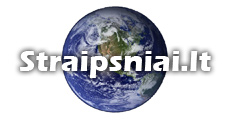12 klasės anglų kalbos pamoka 1
Zita Kezienė (2000 m.); Pamokos planas; Anglų k.; Klasės: 12
TOPIC: Institutions of the European Union and their functions.
I. Introduction: (3 min.) People hesitate whether Lithuania should enter the European Union. To know it for sure we have to know facts how each country is represented, how its interests are respected.
II. Goal setting: (5 min.)
1. To learn what are the institutions of the European Union and how they represent interests of its members;
2. To find out the advantages and disadvantages that countries of the European Union have comparing them with other countries of Europe;
3. To decide what advantages Lithuania would have if it entered the European Union.
III. Explanation: (5 min.)
Pupils are given discs with the material from the Internet: http://europa.eu.int They are divided into 5 groups and each group finds out the main functions of 2 institutions:
Group 1:European Parliament
Council of the European Union
Group 2: European Commission
Court of Justice
Group 3: Court of Auditors
European Investment Bank
Group 4: Economic and Social Committee
Committee of the Regions
Group 5: European Ombudsman
IV. Group work:
1.Each group reads the information about 2 institutions their group has chosen and decides how these institutions help countries to ensure their safety, develop industry, what are the drawbacks and how it would influence social and political life in Lithuania;
2. Each group writes a short resume, which will be presented the next lesson and all students, referring to the facts, will be able to express their opinion about Lithuania’s entering the European Union.
V. Conclusions:
Conclusions will be drawn next lesson.
Learners:12th A.

